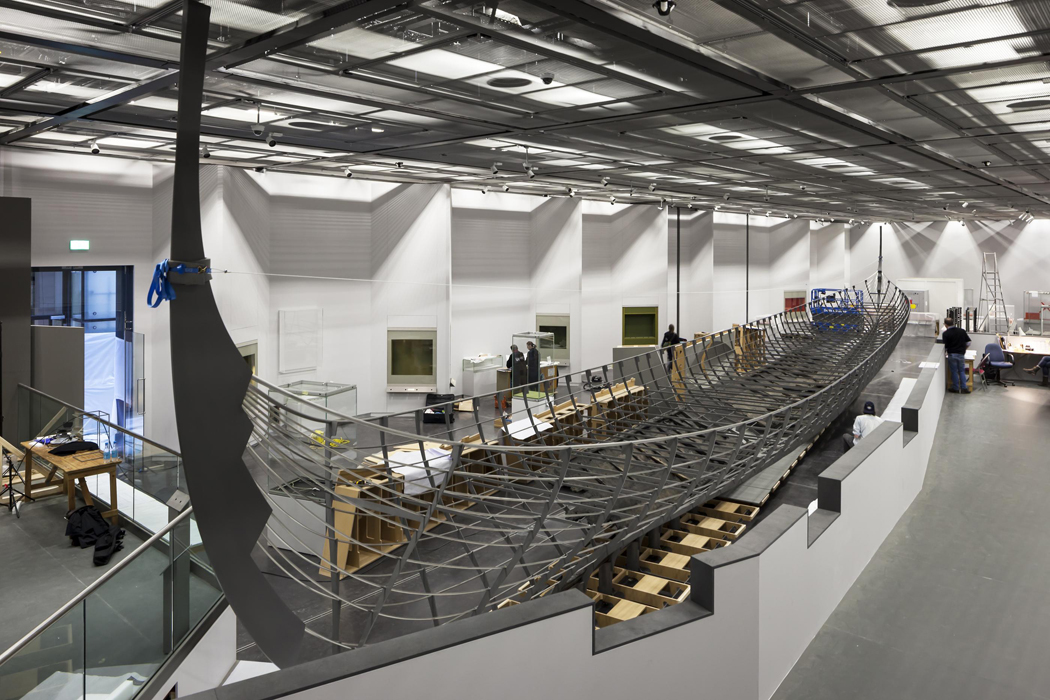2016 will se a series of major events commemorating the invasion and conquest of England by Cnut the Great, king of the Danes
In May 1016 King Cnut, leader of the Scandinavian forces in England, reached London with his fleet of 160 ships, anchoring up by Greenwich. After this a long ditch was dug on the South Bank, and the ships were dragged upstream of London bridge; after which a second ditch was presumably dug around the city on the North Bank, so “that no man could go in or out”. London was under siege. Even though the siege was later lifted, war continued to be waged and in the next few years Cnut succeeded in taking hold of all England. This feat was finalized in 1018 when the Danes and the English reached an agreement at Oxford. As is well known, the price was hefty: a huge tribute from the English of £72.000 was agreed upon. London had to pay an additional £10.500.
Without doubt 2016 will witness a long list of millennial commemorations and events around the country, while a number of books are probably right now in the crucible.
However, conferences have to be announced in advance and this week invitations to a special conference was sent out:
Æthelred II and Cnut the Great: Millennial Conference to Commemorate the Siege of London in 1016.
06.07.2016 – 09.07.2016
CALL FOR PAPERS
London a thousand years ago: a lively port, the centre of trade, cross-roads for armies going north and south, seat of political government and dispute, all against the backdrop of a war between Æthelred II and Cnut with its culmination in the Siege of London of 1016. In just over a year the academics and interested public of London will commemorate this siege and its times with a three-day international conference.
There will be other Cnutonica for this year but none other in the city where the war came to an end. This conference will begin with a welcome on the afternoon of Wednesday 6 July 2016. Lectures will be scheduled to begin on the following day in Senate House, Birkbeck College and UCL in single session. A day-long excursion to Winchester is planned as part of the conference. There will be four plenaries, by
- Prof Simon Keynes of the University of Cambridge in the area of Anglo-Scandinavian history;
- Prof Andrew Reynolds of the Institute of Archaeology, UCL, on the archaeology of London relating to the Vikings and the siege of 1016;
- Prof Andy Orchard of the University of Oxford, on the contemporary Beowulf manuscript, BL MS Cotton Vitellius A.XV and Old English literature;
- and Prof Emerita Roberta Frank of Yale University on Skaldic poetry and the Norse literary achievement.
Papers are invited in the fields of Anglo-Saxon and Scandinavian literature, history and archaeology in and around the Siege of London in 1016. Possible subjects might include, but are not limited to:
- Old English literature of the Benedictine Reform
- Old English poetry (including Beowulf)
- Anglo-Saxon palaeography of the tenth and eleventh centuries
- Skaldic poetry at the court of Cnut
- Æthelred II and the Danish Wars
- Cnut and early medieval historiography
- Material culture in the later Viking Age
- Cnut and coinage of the British Isles
- The archaeology of London
- Anglo-Scandinavian cultural exchange
- Knýtlinga saga and Icelandic and Norwegian sagas
- The Danish empire
- Cnut and the Baltic
- Cnut and Rome
- Queens Emma and Ælfgifu
- Cnut’s Laws
- The Beowulf manuscript in the context of Cnut’s reign
Please send abstracts of about 300 words to Richard North (richard.north@ucl.ac.uk). All papers will be considered on the understanding that speakers have a maximum of half an hour. We plan to arrange a manuscript exhibition, to be able to reserve student accommodation for attendees, and to invite speakers and other contributors to submit papers for a volume of Conference Proceedings for publication in the following year.
FEATURED PHOTO:
Roskilde 6 is a the largest wreck of a viking boat ever found. Dendrochronologically dated to the time of Cnut, it is believed to represent the type of ships, Cnut used to transport his army to England. 160 such ships must have look frighteningly. © Paul Raftery
